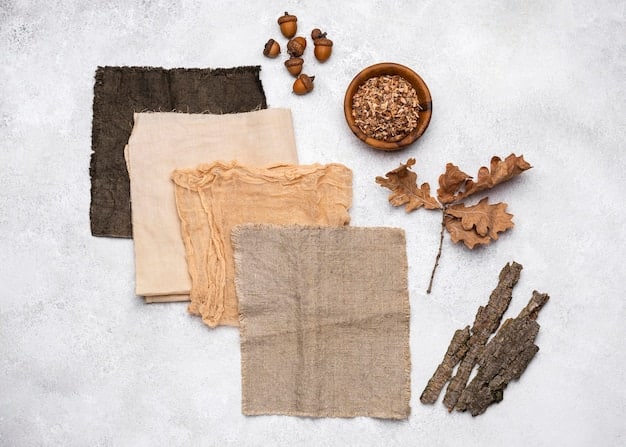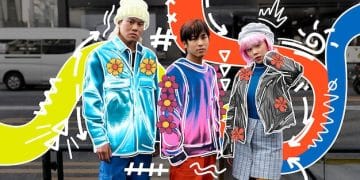Streetwear Fabric Focus: Performance Materials Dominating Market Now

The contemporary streetwear market is increasingly defined by the integration of advanced performance materials, moving beyond traditional aesthetics to prioritize durability, comfort, and functional versatility in modern apparel design.
The landscape of modern fashion is perpetually shifting, and nowhere is this more evident than in the dynamic world of streetwear. Once primarily rooted in urban subcultures and athletic wear, streetwear has evolved into a global phenomenon, influencing high fashion and mass-market trends alike. At the heart of this transformation lies an often-overlooked yet critical element: the fabrics. The focus on high-performance materials in streetwear is not merely a fleeting trend; it represents a fundamental shift in how designers approach comfort, durability, and functionality. This article, titled Streetwear Fabric Focus: The Performance Materials Dominating the Market Now, delves into the innovative textiles that are reshaping the industry, examining their properties, applications, and the lasting impact they have on consumer expectations.
The Rise of Technical Textiles in Streetwear
The journey of streetwear from niche subculture to mainstream powerhouse has been significantly propelled by an embrace of technical textiles, traditionally reserved for extreme sports or military applications. This integration signifies a movement beyond purely aesthetic choices, fostering a demand for clothing that not only looks good but performs optimally under various conditions.
Designers are increasingly leveraging the inherent properties of these materials to create garments that offer unparalleled comfort, protection, and longevity. This section explores why these fabrics have become indispensable elements in modern streetwear collections, providing a foundation for understanding their profound impact.
Beyond aesthetics: embracing functionality
For decades, fashion prioritized appearance over practicality. However, streetwear, with its roots in active lifestyles, has always blurred these lines. The adoption of technical fabrics has amplified this, making functionality a key selling point. This shift means garments are designed to withstand the rigors of daily urban life, from unpredictable weather to constant movement.
- Enhanced Durability: Many performance fabrics are engineered for superior tear and abrasion resistance, ensuring garments last longer.
- Weather Protection: Innovations like water-repellent coatings and windproof membranes shield wearers from the elements.
- Comfort and Mobility: Stretch properties and breathable designs allow for unrestricted movement and temperature regulation.
- Versatility: Garments can transition seamlessly from casual outings to more active pursuits, offering practical solutions for a dynamic lifestyle.
This evolving emphasis on utility has redefined consumer expectations. Buyers now seek out pieces that offer more than just style; they demand integrated solutions to their everyday needs, driving innovation in fabric development.
The blending of outdoor and urban wear
A striking aspect of modern streetwear is its seamless fusion with outdoor and athletic apparel. This hybridization has led to the adoption of materials that excel in demanding environments being repurposed for urban settings. The result is a new category of “urban techwear,” where form truly meets function.
This trend is not just about aesthetics; it’s about practical advantages. The insulation, moisture-wicking, and weather-resistant properties crucial for hiking or climbing jackets are now commonplace in highly sought-after streetwear pieces. This synergy creates apparel that is both fashionable and highly adaptable.
The influence of outdoor brands on streetwear silhouettes and material choices cannot be overstated. Collaborative collections between streetwear labels and outdoor gear manufacturers are increasingly common, solidifying this trend.
The overarching theme is performance. Whether it’s a waterproof parka designed for city commutes or moisture-wicking hoodies for active wearers, the fabrics are chosen for their ability to deliver tangible benefits, elevating the streetwear experience.
Gore-Tex: The Unchallenged King of Weather Protection
When discussing performance fabrics in streetwear, Gore-Tex inevitably comes to mind. This revolutionary material has long been the gold standard for waterproof and breathable outerwear, and its presence in streetwear has solidified its iconic status. Its ability to shield against the elements while allowing moisture vapor to escape makes it indispensable for urban dwellers facing unpredictable weather.
Gore-Tex isn’t just a fabric; it’s a membrane, typically laminated to other textiles to create functional garments. This multi-layered approach ensures optimal performance, providing a barrier against rain and wind without sacrificing breathability. Its ubiquity in high-end streetwear collections attests to its reliability and the premium it adds to any garment.
The core technology behind Gore-Tex is a microporous membrane that contains billions of pores per square inch, each too small for liquid water droplets to pass through, but large enough for water vapor molecules to escape. This ingenious design ensures wearers stay dry from both external precipitation and internal perspiration.
Applications in outerwear
Gore-Tex finds its most prominent application in outerwear, particularly jackets, pants, and even some footwear within the streetwear segment. Its unparalleled ability to keep wearers dry has made it a favorite among brands pushing the boundaries of functional design. From sleek, minimalist rain jackets to robust, multi-pocketed utility coats, Gore-Tex provides the foundational layer of protection.
- Jackets: Parkas, anoraks, and trench coats benefit immensely from Gore-Tex’s waterproof capabilities, making them suitable for all-weather wear.
- Pants: Weather-resistant cargo pants and technical trousers utilize Gore-Tex for added durability and protection during commutes or outdoor activities.
- Accessories: Hats and gloves crafted with Gore-Tex offer complete head and hand protection from rain and wind.
Its integration often comes with a higher price point, reflecting the advanced technology and the brand’s commitment to quality. Consumers are willing to invest in Gore-Tex garments due to their proven performance and longevity, making them a worthwhile addition to any streetwear wardrobe.
Beyond waterproofing: the brand appeal
Beyond its technical prowess, Gore-Tex carries significant brand cachet. The distinctive black and white logo is a mark of quality and performance, instantly elevating the perception of any garment it adorns. This brand recognition has made Gore-Tex a symbol of premium technical wear within the streetwear community.
Collaborations with major streetwear brands often highlight the Gore-Tex logo prominently, leveraging its reputation to attract discerning consumers. This strategic branding not only educates consumers about the fabric’s benefits but also reinforces its status as a desirable component in high-fashion streetwear. The appeal extends beyond pure function, encompassing an element of aspirational design.
The continued innovation by Gore-Tex, including new technologies like Gore-Tex Infinium, expanding into more comfort-focused and less extreme-weather applications, ensures its relevance in the ever-evolving streetwear landscape. It remains a benchmark for technical textile excellence.
Fleece and Merino Wool: Comfort and Thermal Regulation
While often associated with outdoor adventure, fleece and merino wool have firmly established their place in streetwear due to their exceptional comfort, warmth, and thermal regulating properties. These materials offer a stark contrast to stiffer, more technical fabrics, providing a soft, adaptable alternative that prioritizes wearer comfort without sacrificing performance.
Fleece, a synthetic fabric made from polyester, is prized for its impressive warmth-to-weight ratio and quick-drying capabilities. Merino wool, on the other hand, is a natural fiber known for its incredible softness, odor resistance, and ability to regulate body temperature across a range of conditions.

The versatile appeal of fleece
Fleece has seamlessly transitioned from hiking trails to city streets, becoming a staple in streetwear wardrobes. Its soft, plush texture offers immediate comfort, making it ideal for hoodies, jackets, and sweatpants. Its synthetic composition means it’s inherently water-resistant and quick-drying, offering practical benefits for urban environments.
- Lightweight Warmth: Provides excellent insulation without excessive bulk, perfect for layering.
- Quick-Drying: Ideal for sudden rain showers or active use, as it wicks moisture away and dries rapidly.
- Soft-Touch Comfort: Its plush feel makes it a preferred choice for everyday wear.
- Durability: Modern fleece maintains its integrity and anti-pilling properties after repeated washes.
The versatility of fleece allows it to be incorporated into various styles, from oversized, relaxed fit pieces to more structured outer layers. Its affordability and ease of care further contribute to its widespread appeal in the streetwear market. Brands frequently utilize different weights and textures of fleece to diversify their offerings.
Merino wool: natural performance
Merino wool offers a natural, sustainable alternative to synthetic performance fabrics. Sourced from merino sheep, this fine wool possesses remarkable properties that make it a premium choice for elevated streetwear. Its fibers are much finer than traditional wool, leading to a significantly softer feel against the skin, preventing the itchiness often associated with wool.
Beyond its comfort, merino wool is an exceptional thermal regulator, keeping wearers warm in cold conditions and cool in warmer ones. It also boasts natural odor resistance, making it suitable for garments worn frequently without immediate washing. This natural functionality appeals to a growing consumer base that values both performance and sustainability.
It’s increasingly used in base layers, t-shirts, and even some outer garments in streetwear, offering a sophisticated blend of natural aesthetics and high-performance utility. Its breathability and moisture-wicking properties ensure comfort during varying levels of activity, from casual strolls to extended urban explorations.
Ripstop and Cordura: Enhancing Durability and Utility
In the pursuit of creating durable and long-lasting streetwear, materials like ripstop and Cordura have become indispensable. These fabrics are engineered for extreme resilience, originally developed for military and industrial applications, and now widely adopted in urban apparel to offer superior protection against wear and tear.
Both fabrics embody the utilitarian aesthetic often found in streetwear, adding a rugged edge while providing practical benefits. Their ability to withstand tough conditions makes them ideal for garments that are expected to endure constant use and diverse environments.
Their integration into streetwear reflects a movement towards practical, functional garments that can keep up with active urban lifestyles. This focus on durability is a key differentiator in a crowded market.
The strength of ripstop weaves
Ripstop fabric is characterized by its distinctive grid pattern, created by reinforcing threads woven at regular intervals. This unique weaving technique prevents tears and rips from spreading, making it exceptionally durable despite often being lightweight. This makes it a popular choice for items that require both strength and flexibility.
- Tear Resistance: The interwoven grid prevents small tears from expanding into larger, garment-destroying rips.
- Lightweight: Despite its strength, ripstop can be surprisingly light, making it comfortable for daily wear.
- Versatility: Used in various items from jackets and pants to bags and accessories, adding an element of robustness.
- Tactical Aesthetic: The grid pattern itself contributes to the utilitarian, military-inspired look found in much of streetwear.
Its applications in streetwear are diverse, appearing in cargo pants, utility jackets, vests, and even footwear. Brands leverage ripstop not only for its functional benefits but also for its distinctive visual texture, which aligns well with the rugged and practical ethos of the street.
Cordura: ultimate abrasion resistance
Cordura is a brand of fabric, typically made from nylon, renowned for its exceptional durability and resistance to abrasions, tears, and scuffs. Originally developed for military use, its robust nature makes it ideal for areas of garments that experience high wear. Its introduction to streetwear elevates the lifespan and resilience of critical pieces.
Often found in backpacks, footwear, and reinforced sections of jackets or pants, Cordura offers an almost impervious layer of protection. Its coarse texture and matte finish also contribute to a rugged, industrial aesthetic that resonates strongly with streetwear’s utility-driven design principles.
The material’s ability to resist scuffs and daily abuse ensures that items made with Cordura maintain their appearance and integrity over extended periods, making them a wise investment for consumers seeking longevity in their apparel. Its inclusion signals a garment designed for serious, practical use, not just fleeting trends.
Sustainable Innovations: Recycled and Bio-Based Fabrics
As consumer awareness around environmental impact grows, the streetwear industry is increasingly embracing sustainable materials. This shift is not just about eco-consciousness; it’s about innovating with recycled and bio-based fabrics that offer performance benefits comparable to, or even exceeding, traditional textiles. This movement signifies a progressive step towards a greener future for fashion.
Brands are keen to showcase their commitment to sustainability, recognizing that younger demographics, in particular, prioritize ethical and environmentally friendly choices. This has led to the development and widespread adoption of materials derived from plastic waste, natural sources, and even agricultural byproducts, transforming what was once waste into high-value apparel.
Repurposing waste: recycled polyester and nylon
One of the most significant advancements in sustainable performance fabrics is the widespread use of recycled polyester (rPET) and recycled nylon. These materials are often derived from post-consumer plastic bottles and discarded fishing nets, respectively, redirecting waste from landfills and oceans into valuable textile production.
- Reduced Environmental Footprint: Less energy and water are consumed compared to virgin polyester or nylon production.
- Durable and Functional: Recycled versions retain the performance characteristics of their virgin counterparts, including moisture-wicking and strength.
- Versatile Application: Used in everything from activewear and outerwear to accessories, maintaining a low environmental impact.
- Brand Storytelling: Allows brands to communicate a powerful message of sustainability to their consumers.
The quality of recycled synthetics has improved dramatically, now offering comparable softness, durability, and performance. This makes them an attractive option for streetwear brands aiming for both style and responsibility, without compromising on the high standards demanded by performance wear.

The rise of bio-based materials
Beyond recycled synthetics, bio-based fabrics are emerging as a frontier in sustainable textile innovation. These materials are derived from renewable biological resources rather as opposed to fossil fuels, offering a more natural and often biodegradable alternative. This includes materials like Tencel (lyocell), derived from wood pulp, and various plant-based leathers.
Tencel, for example, is highly valued for its softness, breathability, and excellent moisture management, making it suitable for comfortable and functional streetwear pieces. Other bio-based innovations include fabrics made from sugar cane, corn, or even agricultural waste, pushing the boundaries of what’s possible in sustainable material science.
These developments signify a move towards a circular economy in fashion, where materials are not just recycled but also produced from renewable sources, reducing dependence on finite resources. As research and technology advance, bio-based fabrics are expected to play an increasingly central role in the future of streetwear, blending cutting-edge performance with environmental stewardship.
Stretch and Blended Fabrics: Enhancing Mobility and Fit
The dynamic movement inherent in streetwear demands fabrics that offer flexibility, and stretch and blended fabrics meet this need by providing enhanced mobility and a superior fit. By combining various fibers, designers can create textiles that adapt to the body, ensuring comfort during activity and maintaining shape over time. This category includes everything from stretch denims to performance blends designed for specific athletic qualities.
The evolution of stretch fabrics has been pivotal in allowing streetwear to integrate more functional designs without sacrificing style. This is particularly important as streetwear continues to borrow elements from active and sportswear, where freedom of movement is paramount.
Elastane (spandex) integration
The secret behind many modern stretch fabrics is elastane, commonly known by its brand name, Spandex. This synthetic fiber boasts exceptional elasticity, capable of stretching multiple times its original length and returning to its shape. When blended with other fibers like cotton, polyester, or nylon, elastane transforms rigid materials into flexible, form-fitting textiles.
- Enhanced Comfort: Allows garments to move with the body, reducing restriction and discomfort.
- Improved Fit: Ensures clothing maintains its shape and provides a tailored, yet flexible, silhouette.
- Durability: Helps clothes resist bagging or stretching out over time, particularly in high-stress areas.
- Versatility: Can be incorporated into almost any fabric type, from denim to technical knits, expanding design possibilities.
In streetwear, elastane is widely used in jeans, joggers, hoodies, and t-shirts, enabling a fit that is both stylish and conducive to an active lifestyle. The subtle addition of elastane can make a significant difference in the wearer’s experience.
Performance blends for diverse needs
Beyond simple stretch, fabric blends are engineered to combine the best properties of different fibers, creating hybrid materials optimized for specific performance needs. For instance, a blend of cotton and polyester might offer the softness of cotton with the moisture-wicking and durability of polyester.
Other common blends include nylon and elastane for durable, stretchy activewear, or wool and synthetic fibers for warmth, breathability, and enhanced resilience. These engineered fabrics address multiple requirements simultaneously, offering solutions for breathability, insulation, quick-drying properties, and resistance to wear.
The ability to precisely tailor fabric characteristics through blending allows designers unprecedented control over the final garment’s feel, performance, and aesthetic. This innovation supports the streetwear trend towards multifunctional garments that perform across various situations, from casual wear to more demanding urban activities, solidifying their role as a cornerstone of modern apparel design.
The Future of Streetwear Fabrics: Smart Textiles and Beyond
The evolution of streetwear fabrics is far from over. The horizon includes smart textiles and other cutting-edge innovations that promise to integrate technology directly into the very fibers of our clothing. This next wave of materials aims to offer interactive, adaptive, and even health-monitoring capabilities, pushing the boundaries of what apparel can do.
As technology continues to merge with fashion, the distinction between garments and gadgets may blur even further. These advancements hold the potential to redefine comfort, functionality, and personal expression in streetwear, making clothing an even more integral part of our daily, tech-infused lives.
Integrating smart technology into apparel
Smart textiles represent a significant leap forward, incorporating electronic components, sensors, and conductive fibers directly into the fabric. While still in nascent stages for mass market streetwear, prototypes and limited editions are already exploring possibilities such as:
- Temperature Regulation: Fabrics that can actively warm or cool the wearer based on ambient conditions or body temperature.
- Health Monitoring: Garments embedded with sensors that track heart rate, respiration, or activity levels, seamlessly integrating health tech into daily wear.
- Interactive Elements: Clothing with integrated lights, haptic feedback, or even touch-sensitive areas that respond to user input or environmental cues.
- Power Generation: Fabrics capable of harnessing kinetic or solar energy to power small devices or LEDs within the garment itself.
The challenge lies in making these technologies durable, washable, and aesthetically pleasing enough for widespread adoption in streetwear. However, as the demand for connected living grows, smart textiles are poised to play a transformative role in future apparel design, turning clothes into truly dynamic, personal interfaces.
Biomimicry and advanced material science
Beyond direct electronic integration, material science is also looking to nature for inspiration. Biomimicry involves designing materials and structures that mimic biological processes or forms found in nature, leading to highly efficient and often sustainable solutions. Imagine fabrics that self-clean, change color with temperature, or repair themselves when damaged, drawing inspiration from plants or animals.
Ongoing research in nanotechnology and advanced polymer science promises breakthroughs that could lead to fabrics with unprecedented properties: extremely lightweight yet incredibly strong, hydrophobic without chemical coatings, or even fully biodegradable at the end of their lifecycle without losing performance during use.
These speculative but increasingly plausible innovations suggest a future where streetwear is not only stylish and functional but also highly intelligent, adaptive, and environmentally responsible. The relentless pursuit of better, smarter, and more sustainable fabrics ensures that the cutting edge of streetwear will always be a place of exciting and rapid evolution, continuously redefining the intersection of fashion and technology.
| Key Material | Brief Description |
|---|---|
| ☔ Gore-Tex | Unmatched waterproof and breathable membrane for ultimate weather protection in technical outerwear. |
| 🐑 Merino Wool | Natural fiber offering softness, thermal regulation, and odor resistance for comfortable layering. |
| 💪 Cordura & Ripstop | Highly durable fabrics known for abrasion and tear resistance, lending rugged utility to garments. |
| ♻️ Recycled Polyester | Eco-friendly synthetic offering performance comparable to virgin plastics, reducing environmental impact. |
Frequently Asked Questions
▼
Performance fabrics enhance streetwear by adding functionality like weather protection, durability, and comfort. Consumers increasingly seek garments that not only look good but also perform well in various conditions, reflecting a shift towards utilitarian luxury and practical design that adapts to dynamic urban lifestyles.
▼
Gore-Tex is esteemed for its unmatched waterproof and breathable properties. Its microscopic pore structure blocks liquid water while allowing vapor to escape, ensuring dryness and comfort. This advanced technology, combined with its strong brand recognition, positions Gore-Tex as a hallmark of quality and performance in high-end streetwear.
▼
Sustainable fabrics like recycled polyester (rPET) offer environmental benefits by repurposing plastic waste, while still delivering high performance. They maintain the durability, moisture-wicking, and insulation properties of virgin materials. This allows streetwear brands to align with eco-conscious values without compromising on the quality and function consumers expect from performance wear.
▼
Stretch and blended fabrics, often incorporating elastane, are crucial for enhancing mobility and ensuring a comfortable fit in streetwear. They allow garments to move with the body, preventing restriction and maintaining shape. These blends combine desirable properties from different fibers, providing balanced performance in terms of comfort, durability, and moisture management.
▼
The next frontier for streetwear fabrics lies in smart textiles and advanced material science. This includes integrating technology directly into fabrics for interactive features like temperature regulation or health monitoring. Furthermore, biomimicry and nanotechnology are inspiring new materials that are self-cleaning, adaptive, and highly sustainable, promising a future of truly intelligent apparel.
Conclusion
The ongoing evolution of streetwear is intrinsically linked to material innovation. From the undisputed reign of Gore-Tex in weather protection to the natural comfort of merino wool, and the rugged durability of Cordura, performance fabrics are no longer just an optional extra; they are fundamental to the genre’s identity. As the industry looks towards a future shaped by sustainable practices and smart textiles, the blend of functionality, durability, and aesthetic appeal will continue to redefine what streetwear means. The focus on high-performance materials underscores a broader shift in consumer expectations, where technical prowess and environmental consciousness are just as important as style.





